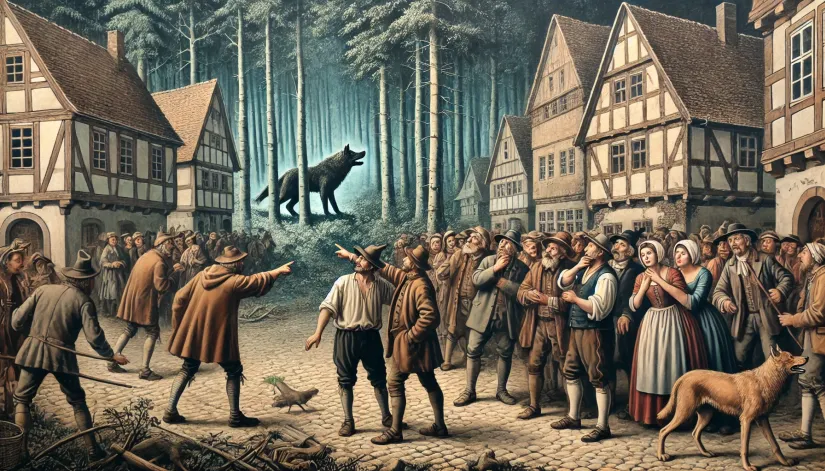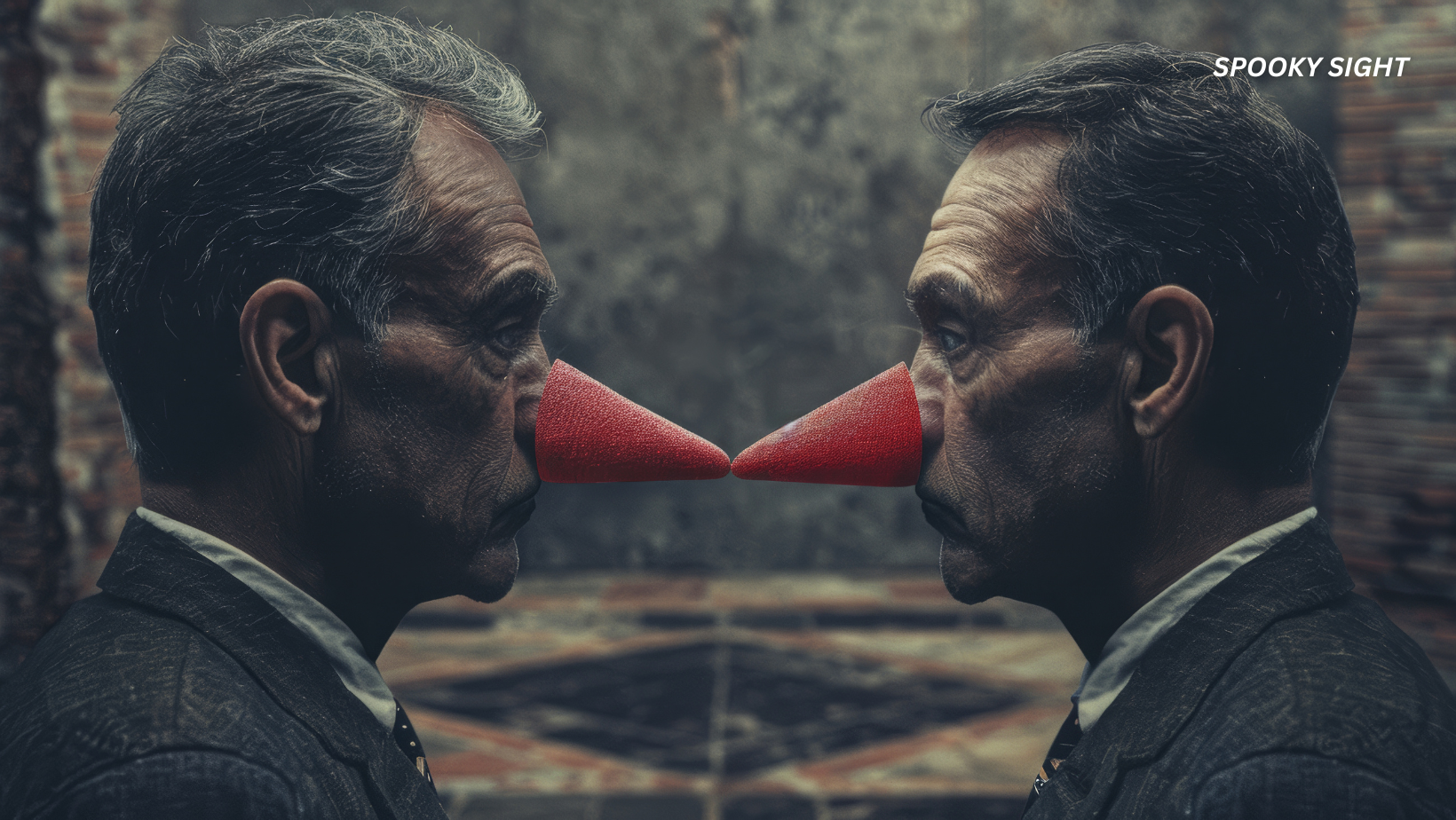Ever heard of the Wolf of Ansbach? No worries if you haven’t—it’s one of those lesser-known but fascinating stories about supposed werewolves.
The Ansbach Werewolf is a wild and creepy legend from the Bavarian town of Ansbach (back when it was part of the Holy Roman Empire).
The story goes that in 1685, a massive, ferocious wolf was wreaking havoc in the area—attacking livestock and children—and scaring the daylights out of the locals.
But what makes this story stand out? Well, it was the chilling belief that the monster wasn’t just an ordinary animal.
Folks thought it was a werewolf. And not just any werewolf, but a reincarnation of their recently deceased and much-hated mayor, Michael Leicht zur Strafe.
In this article:
Historical Context

In 1685, Ansbach was a small yet significant part of the Holy Roman Empire, located in what is now Bavaria, Germany.
However—before even going into what happened there—there’s something you should first understand about that period: 14th-17th century Europe was marked by political turmoil, superstition, and a strong belief in the supernatural, which heavily influenced daily life and governance.
So, what happened in Ansbach? And why are we still talking about that today?
Well, in 1685, Ansbach was led by Bürgermeister Michael Leicht zur Strafe. However, Strafe was not a pleasant man. His rule was deeply unpopular among the townspeople.
When he died, nobody really mourned his loss or cared much. Go figure. In fact, his death was probably celebrated by those who had to endure his cruel and harsh governance.
That was until something strange happened. Just days after Bürgermeister’s funeral, a mysterious beast attacked and killed some sheep and cows.

The Wolf of Ansbach Attacks
Initially, the Wolf of Ansbach was just a pesky nuisance, preying mainly on livestock. Back then, animal attacks on farm animals were pretty common, so folks didn’t pay much attention.
However, things took a terrifying turn when the wolf started targeting children. After the first child’s torn body was found in the woods, the townspeople’s anxiety quickly morphed into superstition.
Since belief in werewolves was widespread in Europe at the time (they were often seen as manifestations of evil or punishments for sins), it didn’t take long for the locals to link the mysterious beast with a supernatural monster.
As the Wolf of Ansbach’s attacks escalated, the townspeople began to suspect that the Bürgermeister’s malevolent spirit—in wolf form—was responsible for everything.
Multiple sightings were reported. Sightings of a large black wolf. Plus rumors of its unnatural cunning and ferocity that only strengthened the belief that they were dealing with something beyond a mere animal.
In response to the growing threat, the community organized a large-scale hunt.

The Hunt and Capture
As the attacks by the Wolf of Ansbach kept getting worse, the terrified townspeople decided it was time to take action: they organized a hunt.
But it wasn’t just any hunt. Alongside the regular townsfolk, several experienced hunters joined in to help with advanced tactics.
One of the main strategies was the Wolfsgrube (or “wolf pit”). It involved digging a deep hole and covering it with branches and straw to camouflage the trap.
They placed a live rooster at the bottom of the pit as bait, hoping to lure the wolf into the trap. It might seem obvious today, but back then, this was a pretty sophisticated method for hunting large predators.
Besides setting traps, the townspeople used hunting dogs to track and drive the wolf out of its hiding spots in the nearby forests.
The hunting party, armed with weapons and accompanied by their dogs, scoured the woods and surrounding areas. The intense search lasted for several days.
Eventually, the relentless hunters and their dogs drove the wolf into an uncovered well. Trapped with no way to escape, the wolf was cornered and killed by the hunters.
End of story, right? Not exactly. What happened next was as extraordinary and macabre as the hunt itself.
The Aftermath
As strange as it might sound, the capture and execution of the Wolf of Ansbach did not simply conclude with its death.
After the beast was slain, its body was subjected to a bizarre and macabre ritual.
The carcass was dressed in human clothing—a flesh-colored suit, a mask, wig, and beard—all meant to resemble the deceased and detested Bürgermeister, Michael Leicht zur Strafe.
Next, the dressed wolf’s body was paraded through the streets of Ansbach. It was a public display of triumph intended to reassure the frightened townspeople that the threat had been neutralized.
Following the parade, the wolf’s body was hanged from a gibbet, a structure typically used for displaying the bodies of executed criminals.
The hanging body of the wolf was left on display for several days so that all members of the community had the opportunity to witness the downfall of the creature that had terrorized them.
Eventually, the wolf’s body was taken down and preserved for permanent display at the local museum.

Comparative Legends: Other Notorious Werewolf Tales of the Era
The Wolf of Ansbach is just one of Medieval Europe’s many famous werewolf legends. Here are some other infamous tales:
The Beast of Gévaudan (1764-1767)
One of the best-documented werewolf legends is the Beast of Gévaudan.
Between 1764 and 1767, this mysterious beast killed between 82 and 124 people (primarily women and children) in the province of Gévaudan in south-central France. The attacks were so severe that the French government organized extensive hunts.
Local hunter Jean Chastel eventually killed the creature, which many believed to be a werewolf or a devil-sent monster.
The Werewolf of Bedburg (1589)
Peter Stumpp (a farmer in Bedburg, Germany) confessed under torture to using a magical belt to transform into a wolf and committing horrific crimes, including murder and cannibalism.
His gruesome execution—which included being broken on the wheel and decapitated—was intended to serve as a public warning against witchcraft and diabolical practices.
The Werewolf of Dole (1573)
Gilles Garnier (a hermit living near Dole, France) confessed to killing children using an ointment provided by a demon to transform into a wolf.
He was apprehended and also executed by burning at the stake.
The Werewolves of Poligny (1521)
In Poligny, France, Michel Verdun, Pierre Bourgot, and Philibert Montot were accused of shape-shifting into wolves using a special ointment.
Their confessions and subsequent executions were part of a broader crackdown on witchcraft and satanic practices.
The Werewolf of Angers (1598)
Jacques Roulet (known as the Werewolf of Angers) was found in a forest near the mutilated body of a boy.
Bloody and disoriented, Roulet confessed to having a salve (given to him by his parents) that transformed him into a wolf.
However, unlike many other werewolf cases, Roulet’s confession wasn’t obtained under torture, making it unique. He was initially sentenced to death but was later deemed insane and sent to an asylum.







